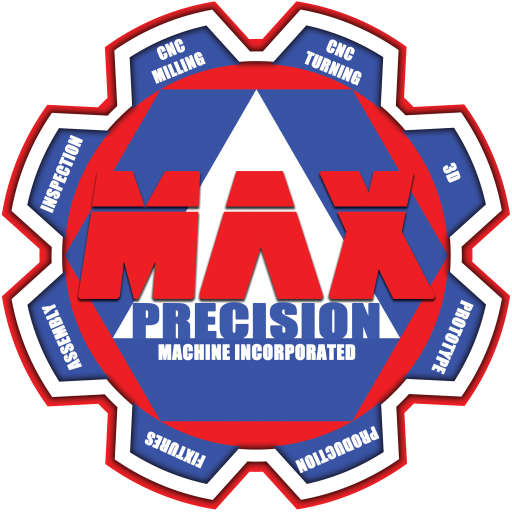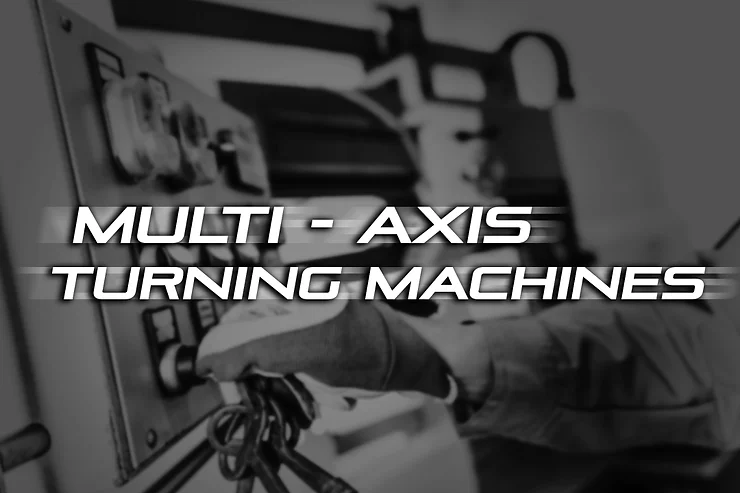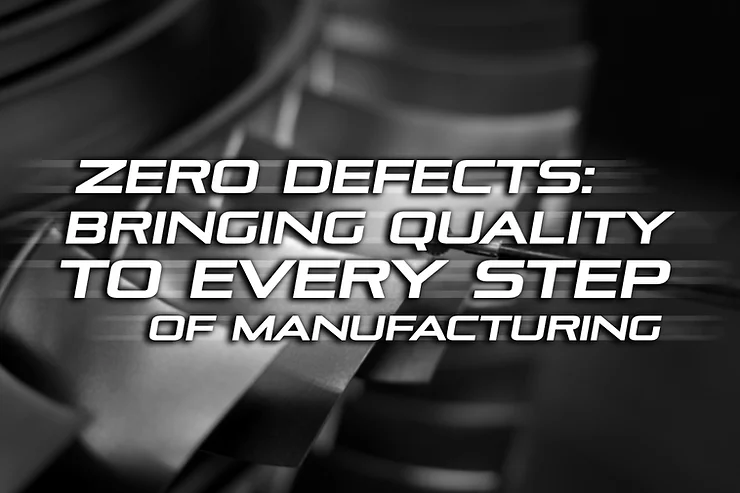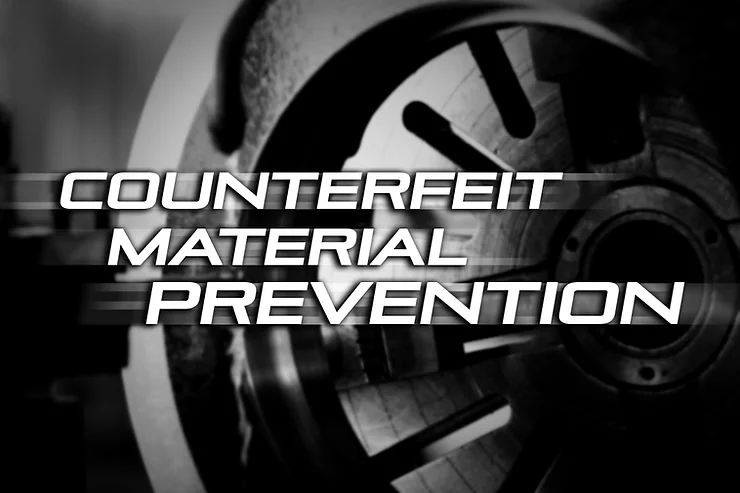tolerance within .0001 on complex geometry
Turning is still and has been one of the most widely spread machining methods even before the era of CNC machines. The common definition is that it is a metal removal process used for machining rotary parts, thus the main rotation is performed on the stock side by a spindle whereas in milling this is done by the tool. But what if a part has features requiring both turning and milling, shall we move the part from a turning machine to a milling or vice versa? Isn’t it possible to make parts in a single setup causing less possibility for inaccuracy and production in a single setup? Nobody aware of the technical development nowadays would even dare to answer negatively and this is indeed the right answer. Modern CNC lathes have become quite a complex piece of machinery with lots of features, machining capabilities, accessories, automation possibilities, and many more which we will take a look at further down in the text. The main features many machine tool builders have to offer are undoubtedly milling functionality, second spindle, maybe a 2nd or a 3rd turret and this brings the possibility of many more optional features to come in, in order to aid for complete part manufacturing. But are lathed with milling capacity a new technology? Definitely not. They have been out on the market even in the 1980s making a giant step in automation possible. A machine, combination of turning and milling is of great benefit for every machine shop giving enormous flexibility to the production.
But this has not been the only great improvement in the CNC lathe machines that have marked their development and brought them to where they are now. Another feature of the modern CNC turning machines contributing to the complete manufacture of a part is a sub-spindle in the machine. It gives the great opportunity to machine both ends of a part as the second sub positions and chucks the stock after the first operation on the main one with high accuracy. The result is complete manufacture of apart from end to end and the solution is given by a single machine, what more can be asked for? Nowadays every machine manufacturer having lathes in the CNC machines they offer to their clients are having the sub-spindle and milling functionality for their machines. Okuma, DMG, Doosan, Mazak, Haas, and many more have quite a large range of lathes with all sorts of equipment, accessories, and optional functions available.
The combination of milling functions and a sub-spindle the basic kinematics option for full part machining and additional turrets will be highly beneficial for productivity and the possibility to have more tool stations. Many machine shops with a focus on CNC turning machines in their production are taking advantage of the benefits of the multi-axis CNC turning centers. Some of the industries like aerospace, oil, and gas, automotive, and medical has proven to be one of the most complexes and demanding high precision in the industry and the possibility to machine a part from both sides and with a single piece of machinery with least man work and additional rechucking of the part is the ideal case to maintain it.
In terms of work volume lathes with sub-spindle and milling, functions are not only suitable for large batch sizes, but also for one-off parts as their advantages are not only to be seen in terms of automation but also through the accuracy and straightforward approach delivered making it possible to easily and efficiently attack the main goal to produce quality parts. The benefits in terms of automation are more than obvious especially in the case the machine is equipped with a barfeeder, robot, or a gantry loader and has accessories like an automated measurement system, tool load monitoring, parts catcher, and so on.
Often times the angular orientation between milled or drilled features on both faces of a part are important and in cases when this is not possible to be accomplished by a single machine brings a lot more hassle to programmers, machinists, and shop owners. In order to reach productivity demands and lower production costs moving a part from one machine to the other is not the best solution, therefore it is in every case preferable to accomplish the part in a single setup.
We were just discussing more the main features in terms of the general kinematics of complex lathe machining centers. In search of productivity and cutting costs it depends on the specific case, but employing a twin spindle lathe with milling functions instead of a traditional approach can cut cycle times and reduce cost by over 50%. Although we will mainly focus on the single turret lathes in this blog it was important to note the multi-turret machines. They do add further capabilities in terms of production speed, machines with a second or even third turret are a great solution. Programming for them is more complex, but it is an unsurpassed method for cycle time reduction. It will require a lot more caution, synchronizations of the cutting and non-cutting moves, and the rest of the miscellaneous operations, but once the program is confirmed the time reduction result will amaze everyone compared with a single turret machine. With every spindle or turret included the number of axis increases giving the opportunity for the programmer to attack the job and use the full arsenal of the multi-axis CNC lathes. Having the main spindle for turning and the rotary tools spindle for milling makes available most of nowadays operations. The list can go from turning, boring, drilling, threading, tapping on the centerline, knurling, milling, thread milling, off-center tapping, broaching, polygon turning, eccentric turning, hobbling, and many more.
There is also a lot more that deserves attention when we talk about the accessories, specialized features, and better machining strategies. It’s worth a glimpse into the technology behind each and what the positives of having it included in your CNC lathe machine are. Maybe it sounds quite logical the more sophisticated machines have many more optional accessories they come with that extend their capabilities, bring up production optimization, great graphical and dialog programming solutions to speed up programming even directly on the machine control panel, and many more. Usually, CNC turning machines having a sub-spindle, milling functions and second turret are in the higher class machines manufacturers have in their list. Okuma, Doosan, DMG, Mazak, Haas are among the renowned machine builders whose price starts from somewhere around $70-90000 for the smallest and affordable class machines with milling functions and over $120 000 for a machine with a sub-spindle. Adding and combining these features makes the price quite much higher because machine manufacturers have made the combinations available only for their higher class machines.
Let’s get a closer look at many of the possible attachments, accessories, and functionalities. Depending on the type of production and the machine shop strategy shop owners can choose from a wide range of additional engineering solutions that best suit their needs.
In terms of setup time, one of the most useful accessories is the tool setter which allows the tool offset values to be taken quickly and accurately without the need of test cut like it was in an old-fashioned way. If the tool setter is motorized it can also be used to check for in-process tool breakage and tool wear correction. This along with a control function for load monitoring and sister tools provides a great automation advantage where the programmer can set tools to substitute others of the same type in order to lengthen the time between servicing the cutting tools. In a usual workflow, a tool breakage will be detected by the touch setter and a substitute tool on the turret will be used instead of it. The programmer/setter of the machine is supposed to define the allowable tool wear value which gives a signal to the machine to use the sister tool instead.
Setup time can also be shortened by having the turret equipped with a quick-change system. Maybe the most famous such solution is the Capto holders by Sandvik Coromant. Although being relatively expensive to replace the standard VDI or bolt-on tool holders with Capto this can be extremely valuable for shops where the time machines are not making chips is crucial. Employing such a system gives the opportunity for a quick and accurate tool change and not only – tool measurements can be done externally from the machine and with a higher level of automation in the shop the tool offset values can be auto-populated directly from a tool measurement machine. This makes setups much quicker at the machine side and tool servicing can also be done in a fast and accurate way.
A very common issue when working on a CNC lathe is the limitation of tool holder positions. This becomes even more obvious in the case of a complex part and a single turret machine. A middle turret indexing function has become very handy to overcome the shortage of tool holder positions. Depending on the specific case it will allow for 2 or 3 internal or external turning tools or driven tools in both radial and axial positions.
The automation possibilities as already mentioned above are the usual ones for most types of lathes – barfeeder, gantry loader, and a robot and depending on which type is chosen some additional functions and accessories come into play. This could be on one hand an automated door in case we have the machine with a gantry loader or a robot or on the other hand a parts catcher in the case of a barfeeder. From the listed automation options the latter is definitely the most affordable and widely spread one. The main benefit of all of the three is that they can allow the machine to work almost independently once a sustainable program and setup have been achieved. What would help the setup time and is a very common solution especially with the barfeeder option is the usage of collet chucks instead of the more common 3 jaw chucks. In cases when this is applicable changing the collets from one diameter to another is a matter of a minute.
A great automation possibility comes from measurement solutions. Although not so very common for lathes as with the milling machines a touch probe to measure the part and create a report or even change the tool wear and re-machine the part to a final dimension is possible. It can also be used to take the Z zero point accurately in cases this could be useful. The main issue of using probing on turret-type lathes is that that the probe is not in a protected place while not in use and can be damaged during cutting operations.
Higher-class CNC lathes like the ones we are currently discussing also have control software enhancements and optional features. They are often a turnkey for automation, ease of use, extended capabilities of the controller, and so on.
Let’s start with something we already mentioned above – the load monitoring function which is very important for operations like rechecking and also for controlling the wear of the tool. What the control does here is to monitor the load of the motors for a given axis and give the machinist the ability to instruct the machine to take any action once it exceeds a preset value. This way the machine will either stop with an alarm and wait for servicing or use a sister tool instead of the one that has caused a higher motor load.
Some very specific applications require also the use of macro functionality which goes optional and makes custom repetitive cycles and read/write of machine parameters available for programming.
And a great asset is of course a simulation that can read the program completely, show possible errors and chances for collision and visualize the entire machining operation There are also some control options that are directly related to the machining capabilities. A good example of those are the eccentric turning, hobbing options, spindle speed variation function, and the option to grip the part with both spindles. The first one – eccentric turning is a function that allows for turning off-center features like cams on shafts for example. It is an accurate and productive method that also provides a good surface finish and of course, doesn’t require a milling cutter to be employed especially for this job.
The hobbing function makes it possible to cut gears directly on the lathe by a special tool holder, saving the need for moving to a gear-making machine. On the control side what this function does is make possible a synchronized rotation between the main spindle and the driven tool spindle at programmable speeds having the ratio of the gears
Maybe not so common but still quite useful is the spindle speed variation function which reduces chatter by interrupting harmonic vibrations caused by instability of the machine or long overhangs. It is of course not a panacea for every issue of this kind, but it definitely deserves trying to set its parameters before going to other, maybe expensive solutions and tooling.
In often cases when producing long shafts, tubes, or just for stability purposes, it is a good approach to be gripping the part at both ends with the main and the sub spindles. This gives rigidity to the setup and allows for higher cutting parameters and productivity. By giving the corresponding commands chucks can have the main or sub-spindle follow the other ones rotary speed in case of turning operation is performed or the angular position and feed rate velocity in case of milling.
It is more than obvious that modern CNC lathes have superior capabilities expanding the functionality of a standard CNC lathe by the combination between turning and milling functions, the presence of a second spindle, and all the rest of the features that go on the list of optional and make complex tasks look simpler. Having such machines in your machine shop park gives advantages of better accuracy, fewer setups, and improved productivity, and saving valuable space for the shop owners. However, they are also a really exciting tool in the hands of a crafted programmer and machinist who would love to take out the most of it.






